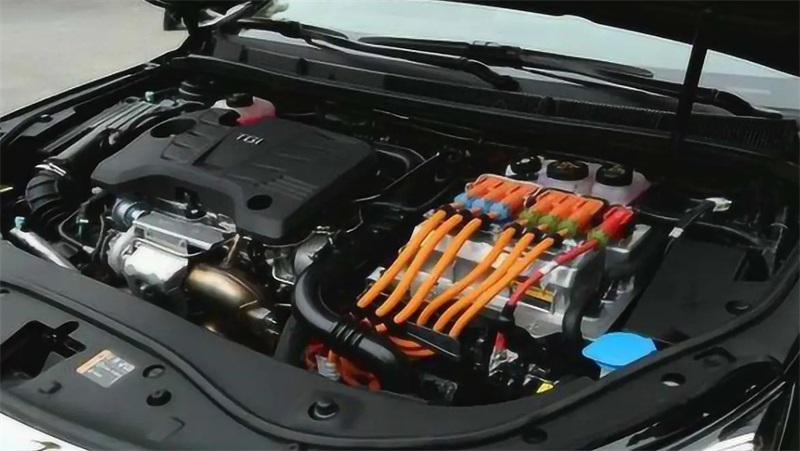Must-read for Buying Electric Vehicles: How to Choose between Lithium Ternary NMC Battery and LiFePO4 Battery?
As electric vehicles (EVs) grow in popularity, consumers are becoming more curious about the various types of EV batteries available. Among the most commonly used options are lithium ternary NMC batteries and lithium iron phosphate (LFP) batteries. Each type of battery has its unique advantages and disadvantages. If you are planning to buy an electric vehicle, it is crucial to understand which one best suits your needs.
This guide compares ternary lithium and LFP batteries in terms of materials, performance, safety, and cost, with recommendations based on your needs, budget, and requirements.

About LFP (LiFePO₄) Batteries
Lithium Iron Phosphate (LFP) batteries utilize lithium iron phosphate as their cathode material. Renowned for their exceptional safety profile, extended cycle life, and cost-effectiveness, these batteries benefit from a stable chemical structure that significantly reduces risks associated with short circuits and thermal events during operation.
While LFP batteries exhibit relatively lower energy density compared to alternatives, they demonstrate remarkable durability, capable of enduring more charge-discharge cycles than most competing technologies. This characteristic has established them as the preferred solution for electric vehicles, energy storage systems, and applications where operational longevity and safety are paramount.
About Lithium Ternary NMC Batteries
In contrast, Lithium Ternary NMC (Nickel Manganese Cobalt) batteries employ a cathode composed of lithium nickel manganese cobalt oxide. These batteries deliver superior energy density, rapid charging capabilities, and excellent low-temperature performance, making them particularly suitable for applications demanding extended range and quick recharge times.
However, Lithium Ternary NMC batteries present comparatively lower safety margins than their LFP counterparts. Their increased susceptibility to thermal runaway necessitates sophisticated battery management systems(BMS) to mitigate potential safety concerns such as thermal events or electrical faults.
Comparative Analysis: LFP Battery vs. Lithium Ternary NMC Battery
Material Composition
• LFP Battery: Lithium iron phosphate cathode - enhanced stability and safety
• Lithium Ternary NMC Battery: Nickel manganese cobalt oxide cathode - superior energy density with reduced stability
Performance Characteristics
• LFP Battery: Moderate energy density with exceptional cycle durability
• Lithium Ternary NMC Battery: High energy density enabling extended range and accelerated charging
Safety Considerations
• LFP Battery: Excellent thermal stability with minimal fire risk
• Lithium Ternary NMC Battery: Requires advanced thermal management to prevent thermal runaway
Economic Factors
• LFP Battery: Cost-advantaged solution with streamlined manufacturing
• Lithium Ternary NMC Battery: Premium pricing reflecting complex production and rare material utilization
Performance Comparison Matrix:
Comparison Item | Ternary Lithium Battery | LFP Battery |
Energy Density | Higher, enabling longer driving range | Lower, but still sufficient for many use cases |
Price | More expensive | More affordable |
Cycle Life | Shorter (500-1,000 cycles) | Longer (2,000-3,000 cycles) |
Safety | Less stable, higher fire risk | Very stable, low risk of fire |
Cold Resistance | Performs better in cold weather | Less effective in cold conditions |
Charging Speed | Faster charging times | Slower charging speeds |
Environmental Impact | Higher due to rare metals | Lower, with more sustainable materials |
Application | Suited for high-performance EVs | Ideal for standard city/commuter EVs |
Reasons for choosing electric vehicles with LFP Battery:
High Safety: LFP batteries offer excellent thermal stability, making them much less likely to overheat or catch fire.
Long Lifespan: These LiFePO₄ batteries can endure significantly more charging cycles, resulting in a much longer service life compared to other battery types.
Cost-Effective: Thanks to a simpler production process and the use of more affordable materials, LFP batteries present a highly budget-friendly option.
Reasons for choosing electric vehicles with Lithium Ternary NMC Battery:
High Energy Density: For those seeking longer driving ranges, ternary lithium batteries provide an excellent solution.
Superior Cold Resistance: These batteries maintain strong performance even in low-temperature conditions, making them ideal for colder climates.
Rapid Charging: Ternary lithium batteries achieve higher charge levels in less time, offering greater convenience for frequent use.
How to Decide Which Battery Is Right for You
When choosing between LFP and ternary lithium batteries for your EV, it's important to consider the following factors:
Usage Scenarios:
If you frequently travel long distances, a ternary lithium battery may be the better choice thanks to its extended driving range. For city driving, where safety and cost-effectiveness are more important, LFP batteries are the ideal option.
Budget:
LFP batteries are generally more affordable, making them a smart choice for cost-conscious buyers.
Performance Needs:
If you prioritize fast acceleration and quick charging times, ternary lithium batteries are better suited to meet your needs. For moderate performance requirements, LFP batteries are more than sufficient.
Conclusion
Both LFP and ternary lithium batteries come with their own advantages and trade-offs. Your choice should ultimately depend on your individual needs:
Choose LFP batteries if safety, long lifespan, and affordability are your top priorities.
Choose ternary lithium batteries if you need higher energy density, better cold-weather performance, and faster charging speeds.
By understanding these key differences, you can make a more informed decision and select the EV battery that best matches your driving habits, budget, and performance expectations.

